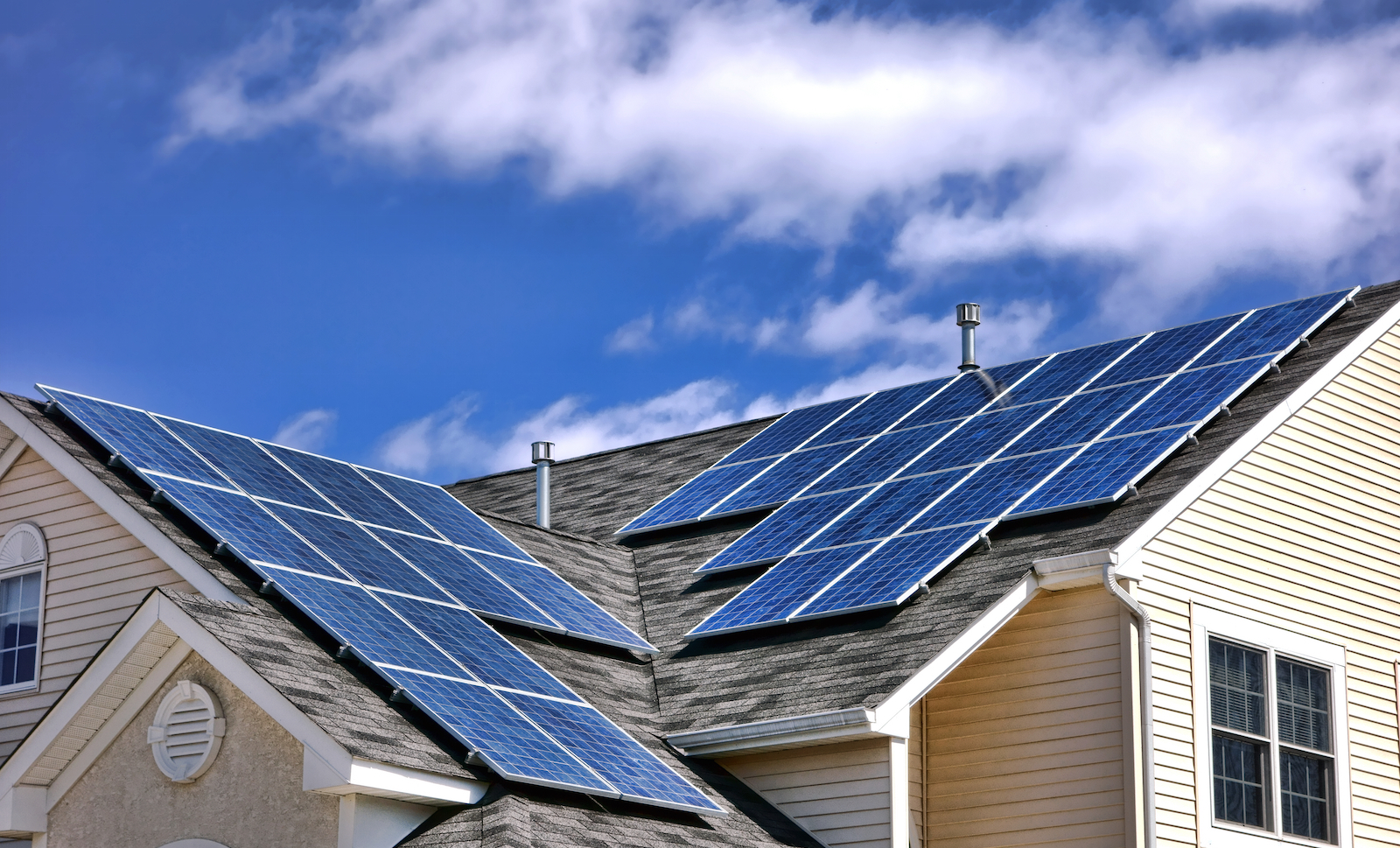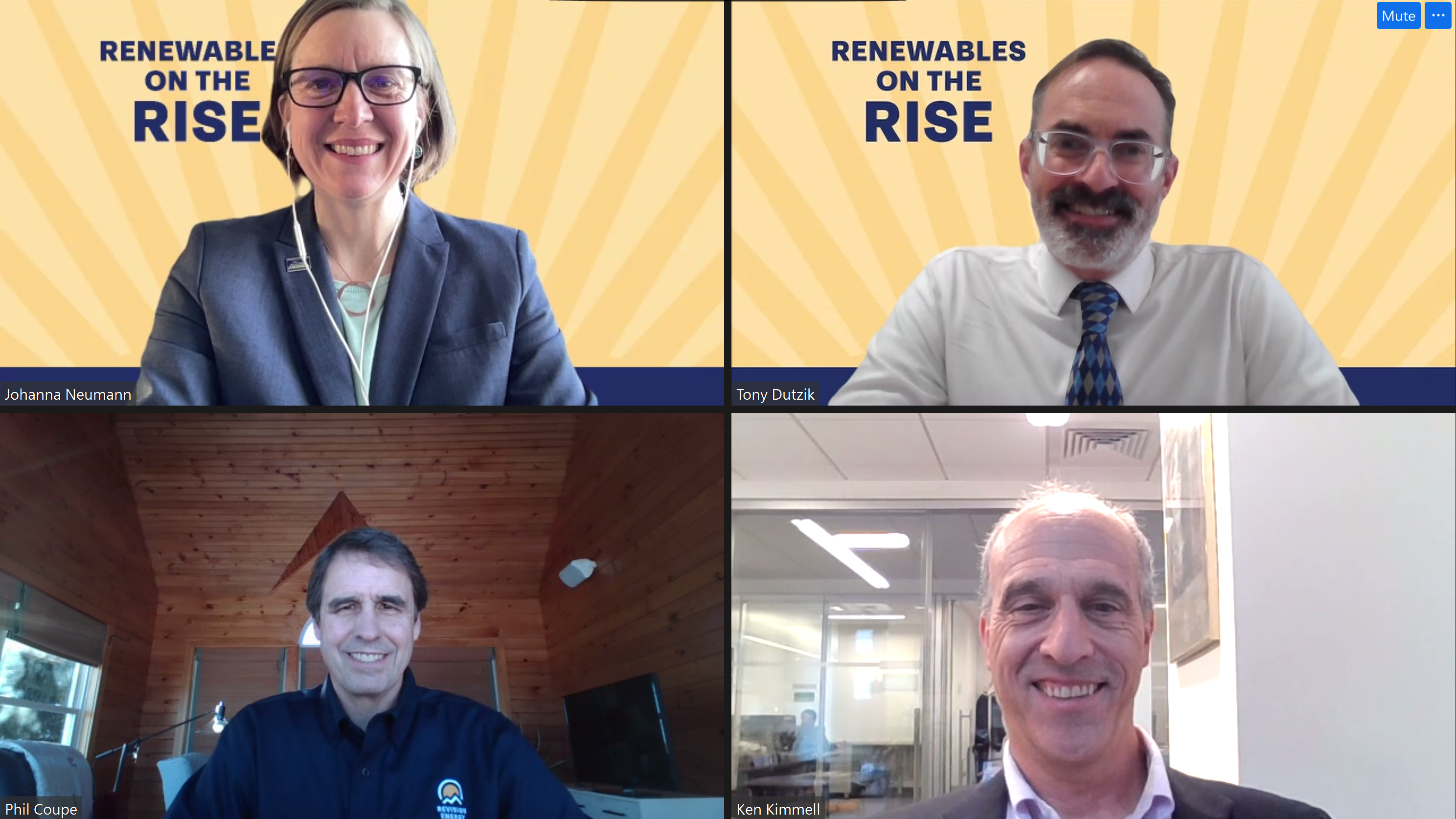
Renewables on the Rise
The rapid growth of renewables, electric vehicles and other building blocks of a clean energy future
The rapid growth of renewables, electric vehicles and other building blocks of a clean energy future

Downloads
The 2021 edition of a report by Environment America Research & Policy Center and Frontier Group
Clean energy is sweeping across America. In 2020, America generated almost four times as much renewable electricity from the sun and the wind as in 2011, with wind and solar now producing 11% of the nation’s electricity. Advances in energy efficiency, electric vehicles, battery storage, electric home heating and other technologies mean that it is now more possible than ever to envision a future powered by renewable energy.
The recent growth of renewable energy in the United States is no accident – it’s the result of strong leadership by key states, as well as supportive federal policies. “Renewables on the Rise 2021” tracks the growth and improvement of clean energy technologies over the last decade and makes the case for a bold commitment to a clean energy future.
The data story below shows how the nation has set – and exceeded – increasingly ambitious goals for renewable energy.
A decade of explosive growth in clean energy
The last decade has seen rapid growth in the key technologies needed to power America with clean, renewable energy.
-
Solar energy: America produces over 23 times as much solar power than it did in 2011, enough to power more than 12 million average American homes.
-
Wind energy: America has nearly tripled the amount of wind power it produces since 2011, generating enough to power over 31 million homes.
-
Energy efficiency: Electric efficiency programs across the U.S. saved over 17% more energy in 2019 than in 2011, as states ramped up their investments in efficiency. In 2018, these programs saved enough electricity to power more than 2.5 million homes.
-
Electric vehicles: In 2011, just over 16,000 battery and plug-in hybrid electric vehicles had been sold in the U.S. As of December 2020, that number had grown 100-fold to nearly 1.7 million vehicles. By mid-2021, cumulative plug-in electric vehicle sales had surpassed 2 million.
-
Battery storage: In 2020, the U.S. had over 1.7 GW of battery energy storage—a critical technology to unlock America’s vast clean energy potential. The nation’s battery storage capacity grew more than 18-fold from 2011 to 2020 and grew by 67% in 2020 alone.
-
Heat pumps: The efficiency of electric heat pumps has improved to the point where they are now an attractive and realistic option for heating and cooling homes across the country. In 2015, 12% of all U.S. homes with heat used heat pumps, up from just 8% a decade earlier. Shipments of efficient air-source heat pumps from U.S. manufacturers nearly doubled between 2011 and 2020, increasing by 10% in 2020 alone.
States are leading the way
The rapid growth of clean energy in the U.S. has been driven in large part by ambitious state renewable energy targets, as well as clean energy tax credits and other supportive policies adopted at the state and federal levels. Nine states—accounting for one-fifth of the nation’s power consumption—have committed to getting 100% of their electricity from carbon-free sources such as wind and solar power, as have nearly 200 cities and towns.
For a dashboard showing your state’s clean energy progress, please select your state below.
Accelerating the pace of change
Between 2011 and 2020, wind, solar and geothermal power production increased at an average rate of 15% per year. If that same rate of growth were to continue, America could meet all of its electricity needs with renewable energy by 2035.
Rapid improvements in technology are making it possible for America to tap even more of the nation’s vast clean energy potential:
-
In 2019, the average capacity of a newly installed wind turbine was 42% greater than one installed in 2010.
-
The median new residential solar panel installed in 2019 was around 37% more efficient than one installed in 2010.
-
The median range of a new electric vehicle more than tripled between 2011 and 2020—with the median new EV now able to travel more than 250 miles on a single charge.
Even as clean energy technologies have been improving, prices have been falling dramatically.
-
Between 2010 and 2018, the cost of distributed solar photovoltaic systems fell by 71% and the cost of utility-scale systems fell by 80-82%.
-
The cost of land-based wind power fell by 66% during the same period.
-
Extremely efficient LED light bulbs cost over $40 a piece just over a decade ago, but technology improvements mean that they now cost less than $2 per bulb.
-
Further dramatic cost reductions are possible: For example, the U.S. Department of Energy aims to drive down the cost of grid-scale, long-duration energy storage technologies by 90% or more within a decade.
It’s time to build a clean energy future
The U.S. should aspire to meet all of its energy needs—for electricity, transportation and industry—with clean, renewable energy, and put policies and programs in place to move toward that goal.
America has enormous clean energy potential. Each of the 50 states has the potential to generate as much power as it currently uses with either wind or solar energy. Transitioning to clean, renewable energy is not only necessary to prevent the worst impacts of global warming, but it can also prevent hazardous air pollution that threatens our health and reduce environmental threats from extracting, processing and transporting fossil fuels.
To build a future of 100% renewable energy, state and federal officials should adopt bold renewable energy goals and put in place the supportive policies needed to meet them. Specifically, policy-makers should:
-
Set 100% renewable energy targets as well as specific targets for key technologies such as solar power, offshore wind energy, and energy storage.
-
Establish strong incentives for renewable energy adoption, including extension and expansion of federal tax credits that have helped fuel the growth of clean energy.
-
Ensure that utility regulations support the growth of renewable energy, including through policies like “net metering” that compensate owners of renewable energy systems fairly for the energy they supply to the grid.
-
Encourage the transition to electric vehicles and buildings through strong “clean cars” standards and improved building codes.
-
Increase investment in energy efficiency programs and set strong building energy codes and efficiency standards for appliances.

Join One Million for 100% Renewable Energy
Add your voice and become one of One Million for 100% Renewable Energy to join a growing community of changemakers and take coordinated and strategic action to move our country and our planet to 100 percent.
Topics
Authors
Tony Dutzik
Associate Director and Senior Policy Analyst, Frontier Group
Tony Dutzik is associate director and senior policy analyst with Frontier Group. His research and ideas on climate, energy and transportation policy have helped shape public policy debates across the U.S., and have earned coverage in media outlets from the New York Times to National Public Radio. A former journalist, Tony lives and works in Boston.
Emma Searson
Find Out More

Solar panels: How federal tax credits can help you pay for them

Recording of Rooftop Solar on the Rise webinar

Rooftop solar on the rise


